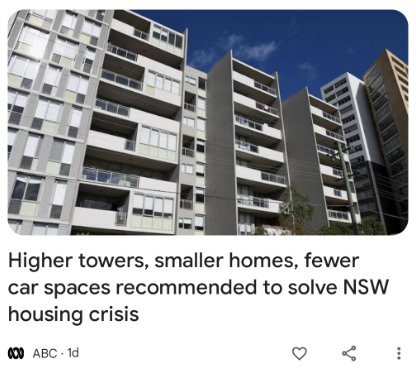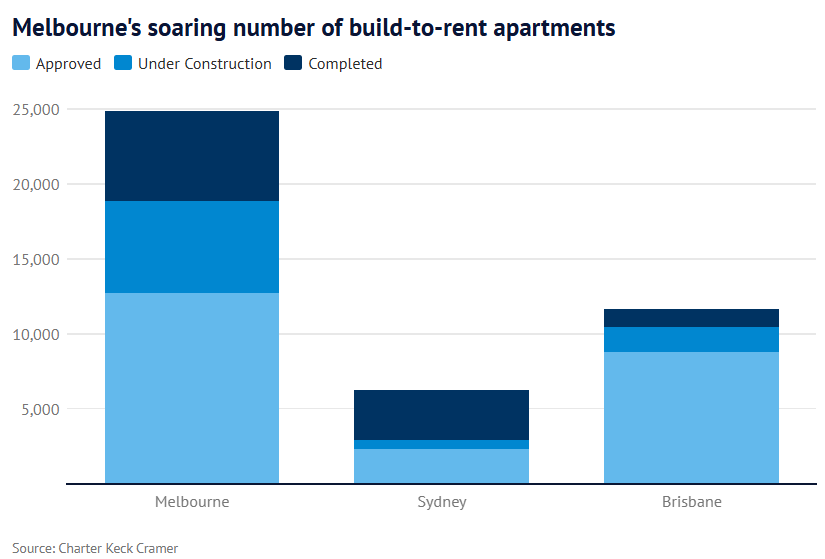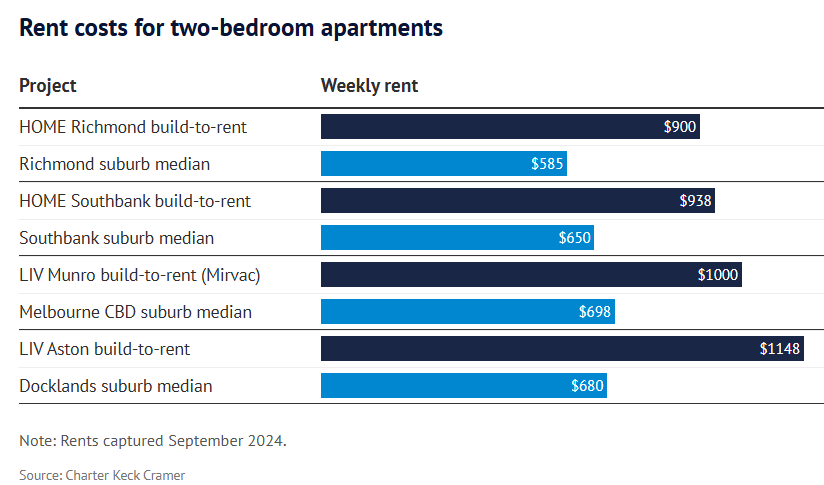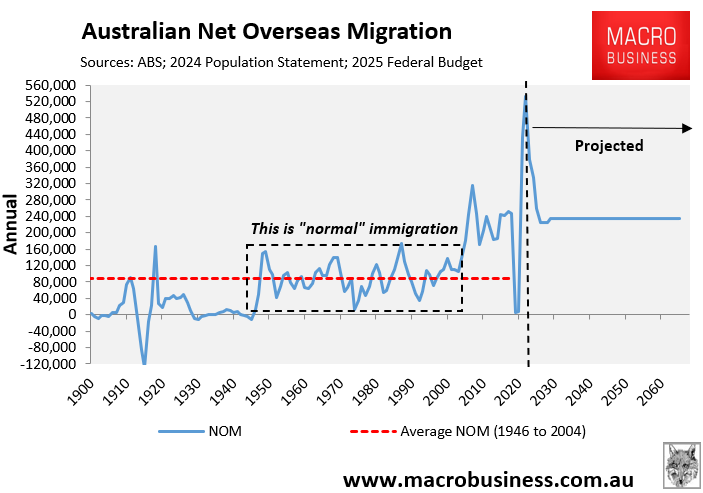The NSW and Victorian governments are pushing hard to liberalise planning and encourage the rapid construction of high-rise towers within inner and middle-ring suburbs.
Last year, the NSW Productivity and Equality Commission recommended bigger towers, smaller apartments, less storage and natural light, smaller balconies, and fewer parking places as solutions to the state’s housing crisis.

“Higher-density zones around train stations would double in size”, the ABC reported.
“The NSW productivity commissioner is also recommending design standards be relaxed to allow the construction of smaller apartments without access to parking, storage or direct sunlight”.
“The commission has also recommended minimum apartment size requirements be removed, to improve feasibility for developers and affordability for buyers”.
“Balcony size rules, storage requirements, and guidelines for “family-sized” units were also unnecessary, the commission found”.
The Victorian government likewise announced that 50 activity centres near transport hubs in Melbourne’s suburbs would be zoned to accommodate up to 20-story apartment complexes.
These developments prompted warnings from experts that apartment quality could suffer in the rush to supply the market.
Building construction lawyer Bronwyn Weir warned that accelerating construction to meet the government’s housing target would inevitably result in corners being cut, reduced quality, and defects.
“On current estimates, 50% of what will be built will have serious defects”, she said.
Torrens University academics also warned that “as the Albanese government fast-tracks its five-year plan to build 1.2 million dwellings”, the prevalence of serious defects in apartment buildings “will likely worsen”.
“I have concerns about the heights being proposed in combination with the lack of a comprehensive urban design process”, SGS Economics and Planning senior associate Andrew Spencer said.
“We’re concerned that there’s a narrative around reducing standards to improve development feasibility”, Jane Keddie, vice president of the Planning Institute of Australia’s Victorian division, said.
Urban Design Forum’s Andy Fergus warned that “taller buildings need wider streets, more public space, larger lots”.
A new report from The Age provided a glimpse into Australia’s slum city future, with thousands of build-to-rent apartments in Melbourne being built without contributing to open spaces and facilities.

Build-to-rent developers pay a standard contribution to councils for community infrastructure, but they are not forced to pay a separate levy specifically for public open space because, under Victoria’s planning laws, it is collected only when a property is subdivided. Build-to-rent developments usually retain one owner.
The public open space levy is as high as almost 9% of a property’s value in some council areas, and up to 7.06% in the City of Melbourne…
Yarra Mayor Stephen Jolly warned that residents faced denser suburbs without enough open space if the legislation was not changed…
“Our inability to collect open space contributions from build-to-rent developments is putting pressure on our city’s public spaces”, Port Phillip Mayor Louise Crawford said. “Open space contributions, often worth millions of dollars annually, are a vital source for us”…
The article also highlighted that build-to-rent apartments are priced well above suburban medians. Therefore, they are not an affordable solution:

Build-to-rent developers receive generous tax concessions, including a 50% discount on taxable land value for up to 30 years in Victoria. The federal government has also lowered income tax if buildings offer a minimum five-year lease and 10% affordable housing.
Accelerating the construction of high-rise towers across Sydney and Melbourne will cause economic and social infrastructure congestion, limiting residents’ access to roads, hospitals, schools, parks, and other public services.
Instead of pursuing the ‘grow at all costs’ path, the NSW and Victorian governments should demand that the federal government reduce net overseas migration to modest and sustainable levels.

Doing so would avoid bulldozing our suburbs into high-rises and make housing more accessible and affordable for incumbent residents.
The vast majority of Australians are against mass immigration. They also categorically do not want to live in high rises.

